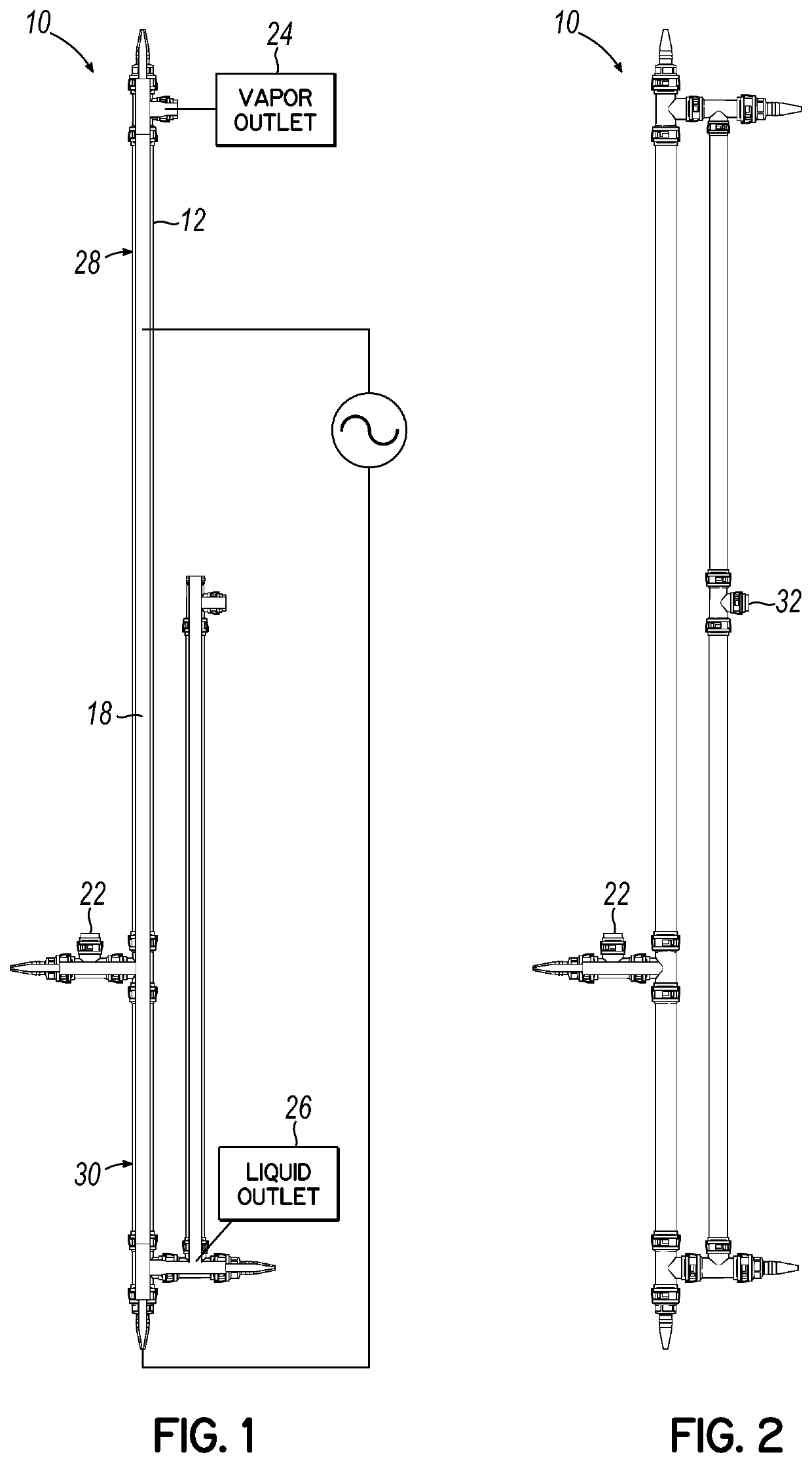Decontamination of fluids via joule-heating
a technology of fluid decontamination and joule heating, which is applied in the direction of evaporation, waste water treatment from quaries, separation processes, etc., can solve the problem that supercritical water reactors cannot be scaled, and achieve the effects of poor heat transfer, limited scalability, and high prevalence of conducting salts
- Summary
- Abstract
- Description
- Claims
- Application Information
AI Technical Summary
Benefits of technology
Problems solved by technology
Method used
Image
Examples
example 1
[0087]A prototype reactor, in accordance with the various aspects of the present invention, was constructed and tested under funding from National Energy Technology Lab (NETL) under grant number DE-FE0026315. A diagram of the reactor constructed in this Example is shown in FIGS. 11A and 11B. FIG. 11A is a diagram depicting the supporting equipment as well as the joule-heated reactor, V-101. FIG. 11B shows the reactor itself (along with an enlarged view of a cross-section of the reactor).
[0088]Contaminated water (test brines) were run through the system and reactor, under various conditions, to demonstrate that the reactor can reduce TDS concentrations.
[0089]The system, as can be seen in FIG. 11A, uses a HPLC pump, P-100, to produce a flowrate of up to 300 ml per minute at pressures up to 5000 psi. Pressure is produced by two back pressure regulator valves, BRP-100 and BRP-101, that are controlled through a National Instruments cRIO embedded data acquisition and control system (DAC)....
example 2
[0091]Thermodynamic data of multicomponent brines is needed to properly treat brines from oil / gas and CO2 sequestration operations. However, the thermodynamic properties of multicomponent hypersaline brine (>3.5 wt %) are unknown and limited to estimations based on single component brine data. Experimental data for multicomponent brines at elevated temperatures and pressures do not exist due to operating conditions above the pseudocritical point of pure water.
[0092]Early research into the properties of brines was driven by the need for thermodynamic data above standard temperature and pressure for use in geological modeling including groundwater [N. B. Keevil, “Vapor pressures of aqueous solutions at high temperatures,” Journal of the American Chemical Society, vol. 64, no. 4, pp. 841-850, 1942; Christopher Palliser, “A model for deep geothermal brines: state space description and thermodymanic properties,” Massey University, 1998] and sea floor hydrology [T. Driesner and C. A. Hein...
example 3
[0130]As described above, produced water TDS content can vary wildly depending upon the source reservoir (as seen in FIG. 23), so a means of treating higher salinity brines with minimal discharge is an emerging concern. Further, as described above, supercritical water desalination is an attractive treatment methodology for hypersaline brine (produced water) waste streams generated by oil / gas wells. The Joule-heating method provided in this study allows for internal heating of high conductivity fluids, reducing thermal lag and heat losses endemic to external heating methods. This Example describes the treatment of field-derived produced water from a Utica-Point Pleasant shale well located in Noble County, Ohio (using methods described herein consistent with the principles of the present invention), and compares the results of treating that field-derived produced water with previous results using simulated brines. Experimental results from a prototype process are provided at operating...
PUM
| Property | Measurement | Unit |
|---|---|---|
| concentrations | aaaaa | aaaaa |
| concentrations | aaaaa | aaaaa |
| concentrations | aaaaa | aaaaa |
Abstract
Description
Claims
Application Information
 Login to View More
Login to View More - R&D
- Intellectual Property
- Life Sciences
- Materials
- Tech Scout
- Unparalleled Data Quality
- Higher Quality Content
- 60% Fewer Hallucinations
Browse by: Latest US Patents, China's latest patents, Technical Efficacy Thesaurus, Application Domain, Technology Topic, Popular Technical Reports.
© 2025 PatSnap. All rights reserved.Legal|Privacy policy|Modern Slavery Act Transparency Statement|Sitemap|About US| Contact US: help@patsnap.com



